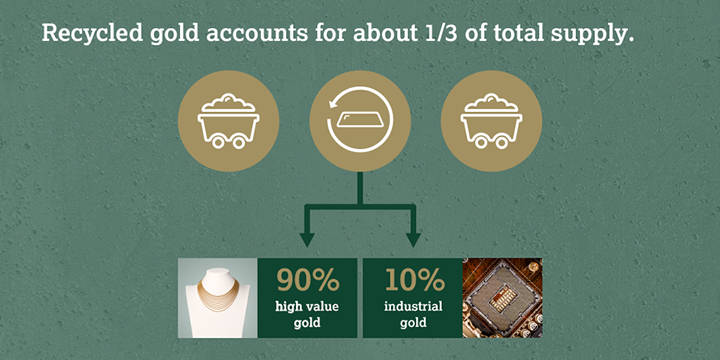Alistair Hewitt
Former Head of Market Intelligence World Gold CouncilDrivers of gold recycling
Gold recycling increases over the long run. In the short run, it responds swiftly to changes in the price of gold and to economic shocks. Recycling reached a seven-year low in 2014 and will likely remain low in 2015.
The technology of gold recycling
Reclaiming materials, including gold, from end-of-life electronics is more complicated than reclaiming them from high-value sources of recycled gold (primarily jewellery).
The gold-recycling industry
Industry players face complex challenges as well as opportunities. Challenges include overcapacity and increased competition. The growing volume of electrical and electronic waste offers huge opportunities for the recycling of industrial materials, although the waste that lends itself to gold recycling will constitute only 2 percent of the total volume of electrical and electronic waste.
Alistair Hewitt, Head of Market Intelligence talks about the market drivers and outlook for the recycling industry in 2015, following the launch of ‘The Ups and Downs of Gold Recycling’ - a joint report, done in conjunction with the Boston Consulting Group.

